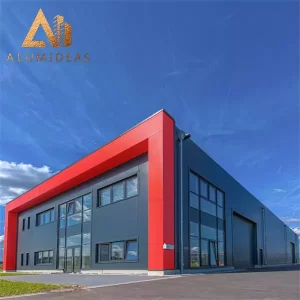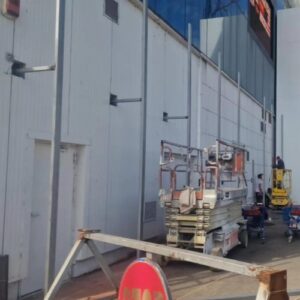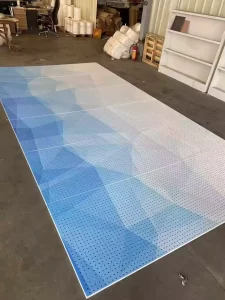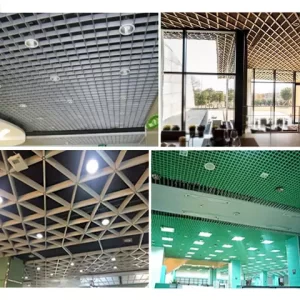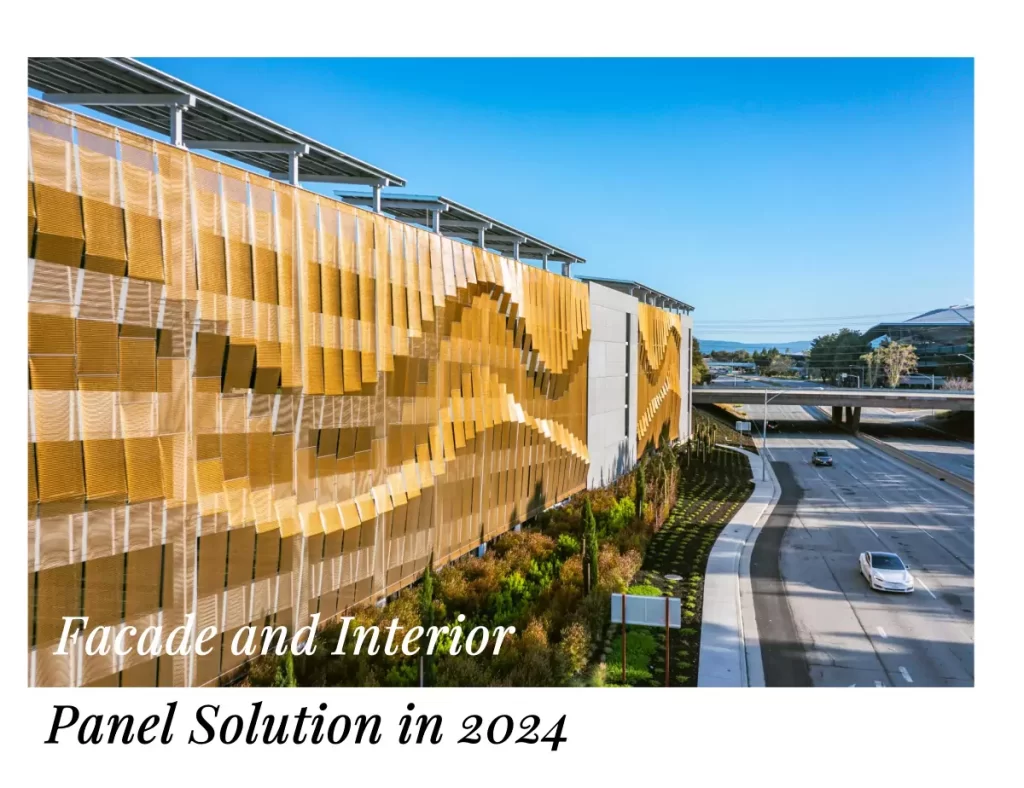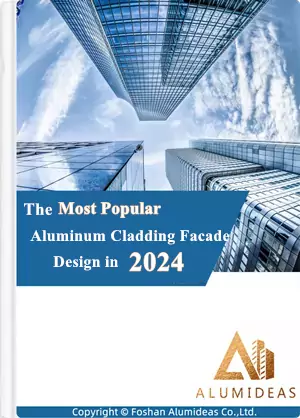This article is to introduce chemical and physical properties of aluminum and some other basic information of some aluminum alloys applied in aluminum panels.
For aluminum panels, 1xxx series(pure aluminum), 3xxx series (aluminum-manganese alloy), and 5xxx series(aluminum-magnesium alloy) are extensively used.
More in-depth analysis on aluminum mechanical properties, please check this blog: Comparison Of 10 Mechanical Properties Of Tempers For Aluminum Panels
A brief physical properties of aluminum introduction to 1xxx series, 3xxx series and 5xxx series
1xxx series properties
1xxx series belongs to a series with more aluminum content among all series. The purity can reach more than 99.00%. Since it does not contain other technical elements, the production process is relatively simple and the price is relatively cheap. It is a series commonly used in conventional industries at present.
The aluminum content of the 1xxx series aluminum plate is determined according to the last two Arabic numerals. For example, the last two Arabic numerals of the 1050 series are 50. According to the international brand naming principle, the aluminum content reaches more than 99.5%.
3xxx series properties
3000 series aluminum plate is a series with better anti-rust function. It is usually used in wet environments and is the more commonly used alloy series. 3003 aluminum is the most widely used aluminum alloy, which is made of commercially pure aluminum with manganese added to increase its strength, and its strength is 20% stronger than 1100 grade aluminum plate. It has excellent corrosion resistance and machinability.
5xxx series properties
The main element of 5xxx series is magnesium, and the magnesium content is between 3-5%, so 5xxx series aluminum alloy is also known as aluminum-magnesium alloy. The main features are low density, high tensile strength, high elongation and good fatigue strength, but it can’t be strengthened by heat treatment. With the same area, the weight of aluminum-magnesium alloy is lower than other series. It is also widely used in conventional industries.
In China, the 5xxx series aluminum plate belongs to one of the more mature aluminum plate series.
Alloy 5052, one of the most popular alloys in aluminum plates industry, has a good marine atmosphere corrosion resistance of saltwater and excellent workability. It can be drawn or formed easily into intricate forms.
Among 1xxx series, 3xxx series and 5xxx series, 1060, 1100, 3003 and 5052 are favored by consumers from all over the world. Let’s check the basic data and information below to get a understand of what these four alloy is.
1060 PHYSICAL COMPOSITION
Physical Properties | Metric | Comments |
Density | 2.705g/cm³ | AA;Typical |
1060 CHEMICAL COMPOSITION
Aluminum | > =99.6% |
Copper(Cu) | < =0.05% |
Iron(Fe) | < =0.035% |
Magnesium(Mg) | < =0.03% |
Manganese(Mn) | < =0.03% |
Other(each) | < =0.03% |
Silicon(Si) | < =0.25% |
Titanium(Ti) | < =0.03% |
Vanadium(V) | < =0.05% |
Zinc(Zn) | < =0.05% |
1060 MECHANICAL PROFERTIES
Mechanical Properties | Metric | Comment
|
Hardness Brinell | 19 | AA;Typical;500g load;10mm ball |
| 55.0-95.0 MPa | Sheet and plate
|
| >=58.0MPa @Thickness 0.254-12.7mm | Drawn tube
|
| 58.0-95.0MPa @Thickness 1.27-4.29mm | Extruded tube
|
| >=17.0MPa | Extruded tube |
| 27.6MPa | AA;Typical |
| >=17.0MPa @Thickness 0.254-12.7mm | Drawn tube |
| 43% @Thickness 1.59mm | AA;Typical |
Ultimate Bearing Strength | 117MPa | Edge distance/pin diameter=2.0 |
Bearing Yield Strength | 41.0MPa | Edge distance/pin diameter=2.0 |
Machinability | 10% | 0-100 Scale of Aluminum Alloys |
1060 PROCESSING PROPERTIES
Processing Properties | Metric | Comments |
Annealing Temperature | 343℃ |
The following are the characteristics of aluminum alloy 1060:
Principal Design Features: This is a relatively low strength, essentially pure aluminum, alloy. It is noted for excellent welding characteristics and formability along with good corrosion resistance. It cannot be hardened by heat treatment.
Applications: Commonly used in the manufacture of equipment and railroad tank cars.
Machinability: The machinability of AL 1060 is fair to poor, especially in the soft temper conditions. In the harder(cold worked) tempers such as H16 and H18 the machining characteristics are improved. Either carbide or high-speed steel tooling may be used and use of lubricants is recommended, although some cutting may be done dry.
Forming: This alloy has excellent forming capability by cold or hot working with commercial techniques.
Welding: AL 1060 may be welded by standard commercial methods. If filler rod is required it should be of AL 1060. A precaution should be noted for the use of resistance welding as by this method some trial and error experimentation may be required to obtain good results.
Heat Treatment: This alloy does not harden by heat treatment. It may be annealed after cold working.
Forging: This alloys may be forged in the temperature range of 950 to 700F.
Hot Working: Hot working, if required, may be done in the range of 900 to 500F.
Cold Working: The cold working characteristics of AL 1060 are excellent. It can readily be cold worked by all conventional methods.
Annealing: Annealing may be done at 650F followed by air cooling.
Hardening: The alloy hardens only from cold working. Tempers H12,H14,H16,H18 are determined by the amount of cold working imparted into the alloy.
Other Physical Props: Electrical conductivity 55% of copper.
Other Mechanical Props: Shear strength of annealed(O temper) is 7ksi. For H14 temper it is 9ksi and H18 temper 11ksi.
1100 PHYSICAL COMPOSITION
Physical Properties | Metric | Comments |
Density | 2.71g/cm³ | AA;Typical |
1100 CHEMICAL COMPOSITION
Aluminum | 99%-99.95% |
Copper(Cu) | 0.05%-0.20% |
Iron(Fe) | < =0.95% |
Manganese(Mg) | < =0.05% |
Silicon(Si) | < =0.95% |
Zine(Zi) | < =0.1% |
Residuals | < =0.15% |
The following are the characteristics of aluminum alloy 1100:
Principal Design Features:This alloy is commercially pure aluminum with excellent forming characteristics.
Applications: Commonly used in spun hollow ware, fin stock, heat exchanger fins, dials and name plates, cooking utensils, decorative parts, gift ware, rivets and reflectors, and in sheet metal work.
Machinability: This alloy has very good machinability. Best results are obtained when machining is done with the alloy in hard temper. Carbide tooling is preferred, but high speed steel tooling may also be used. For heavy cuts an oil lubricant should be used otherwise turning may be done dry.
Forming: Forming, either hot or cold, is readily accomplished with this alloy. In the annealed condition the alloy can be cold worked extensively without an intermediate anneal.
Welding: Readily welded by all conventional methods. Use AL 1100 consumable electrodes and filler wire.
Heat Treatment: The alloy does not respond to heat treatment other than to produce the annealed condition, “O” temper.
Forging: The alloy may be hot forged with no difficulty.
Hot Working: Hot working is readily accomplished if necessary.
Cold Working: This is an ideal alloy for cold working because of the good ductility in the annealed temper. It can be cold formed by bending, drawing or spinning.
Annealing: Annealing, which may be necessary after severe cold working, is done at 650 F for sufficient time to allow for thorough heating and then air cooled.
Aging: Not applicable to this alloy.
Tempering: Not applicable to this alloy.
Hardening: Hardens by cold working only.
Other Physical Props: Electrical conductivity is 53% of copper.
Other Mechanical Props: Shear strength values are: “O” (annealed) temper 9 ksi, H12 temper 10 ksi, H18 temper 13 ksi.
3003 PHYSICAL PROPERTIES
Properties | Metric | Imperial |
Density | 2.73g/cm³ | 0.0939/in³ |
Melting point | 644ºC | 1190ºF |
3003 CHEMICAL COMPOSITION
Aluminum | 99.68%-99% |
Copper(Cu) | 0.05%-0.20% |
Iron(Fe) | < =0.7% |
Manganese(Mg) | 1.0%-1.5% |
Silicon(Si) | < =0.6% |
Zine(Zi) | < =0.1% |
Residuals | < =0.15% |
3003 CHARECTERISTICS
Machinability | Good machinability characteristics. |
Forming | Forming using conventional hot working or cold working method. |
Welding | Good weldability. |
Heat Treatment | Does not respond to heat treatment. |
Forging | Forged at 260 to 510°C (500 to 950°F) |
Hot Working | Hot working at 260 to 510°C (500 to 950°F). |
Cold working | Cold worked using all conventional techniques. |
Annealing | Annealing at 413°C (775°F). |
Hardening | Hardening by cold working. |
Applications | Use in duct work, chemical equipment, and general sheet metal work. It is also used in manufacturing the following items: Cooking utensils Builder’s hardware Pressure vessels Ice cube trays Eyelet stock Awning slats Gas lines Garage doors Refrigerator panels Heat exchangers Gasoline tanks Storage tanks Drawn and spun parts |
5052 PHYSICAL PROPERTIES
Properties | Metric | Imperial |
Density | 2.68 g/cm3 | 0.0968 lb/in³ |
5052 CHEMICAL COMPOSITION
Magnesium(Mg) | 2.2%-2.8% |
Copper(Cu) | < =0.1% |
Chromium(Cr) | 0.15%-0.35% |
Iron(Fe) | < =0.4% |
Manganese(Mn) | < =0.1% |
Silicon(Si) | < =0.25% |
Zinc(Zi) | < =0.1% |
Aluminum | Remainder |
The following are the characteristics of aluminum alloy 5052:
Machinability: The machinability of Aluminum 5052 alloy is rated as fair. This alloy can be easily machined in hard temper than in annealed form, and the quality of finish is better. Other than in very light cuts, all other machining should be done using oil lubricants.
Forming: Aluminum 5052 alloy can be easily formed at room temperature.
However, consecutive cold working tends to reduce the alloy’s formability.
Welding: Welding can be easily performed on Aluminum 5052 alloy using conventional methods. In case a filler rod is needed, it should be Aluminum 5356 alloy as filler. The most suitable welding methods are tungsten or consumable electrode inert gas shielded arc welding.
Forging: Aluminum 5052 alloy can be forged from 510°C (950°F) down to 260°C (500°F).
Hot Working: Aluminum 5052 alloy can be hot worked easily from 510°C (950°F) down to 260°C (500°F).
Cold Working: Aluminum 5052 alloy is easy to cold work. It can be formed by spinning and drawing. Depending on the extent of spinning, annealing may be required intermediately.
Annealing: Aluminum 5052 alloy can be annealed at 343°C (650°F) and then air cooled.
Hardening: Aluminium / Aluminum 5052 alloy can be hardened by cold working only.
Applications: Aluminum 5052 alloy is used in the manufacture of the following products:
Milk crates, Hydraulic tubes, Appliances, Kitchen cabinets, Small boats, home freezers, Aircraft tube, Fencing.
Looking For a Facade Supplier For Your Projects?
Alumideas is a aluminum facade manufacturer in China. We provide a one-stop solution for your interior and exterior decorative cladding projects. Ask for a quote now!
We will contact you within 1 working day, please pay attention to the email with the suffix “@www.alumideas.com”.

